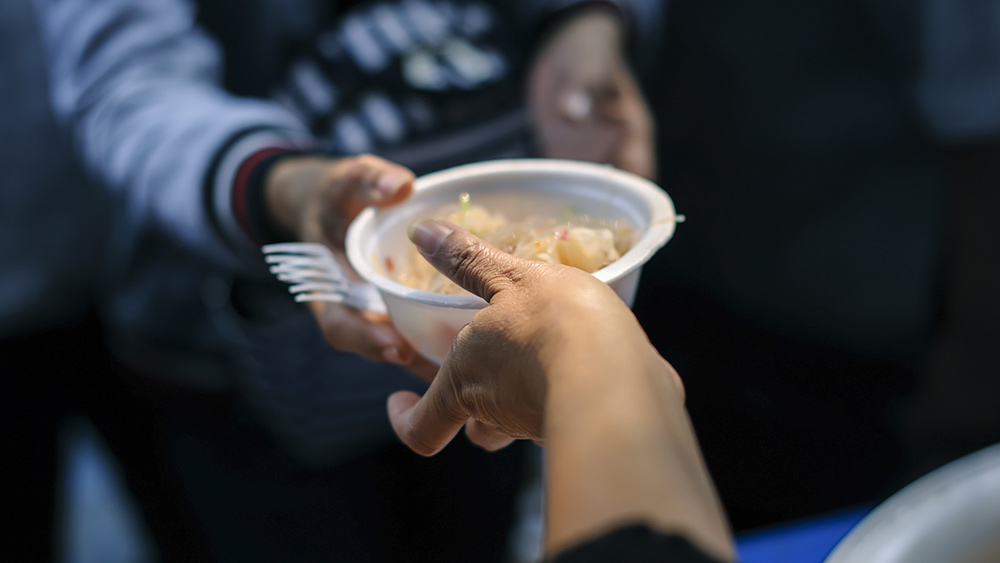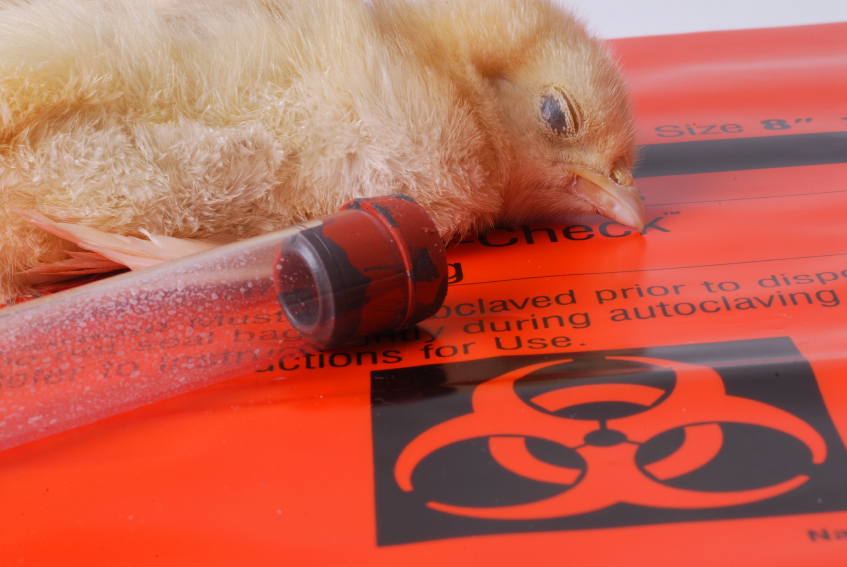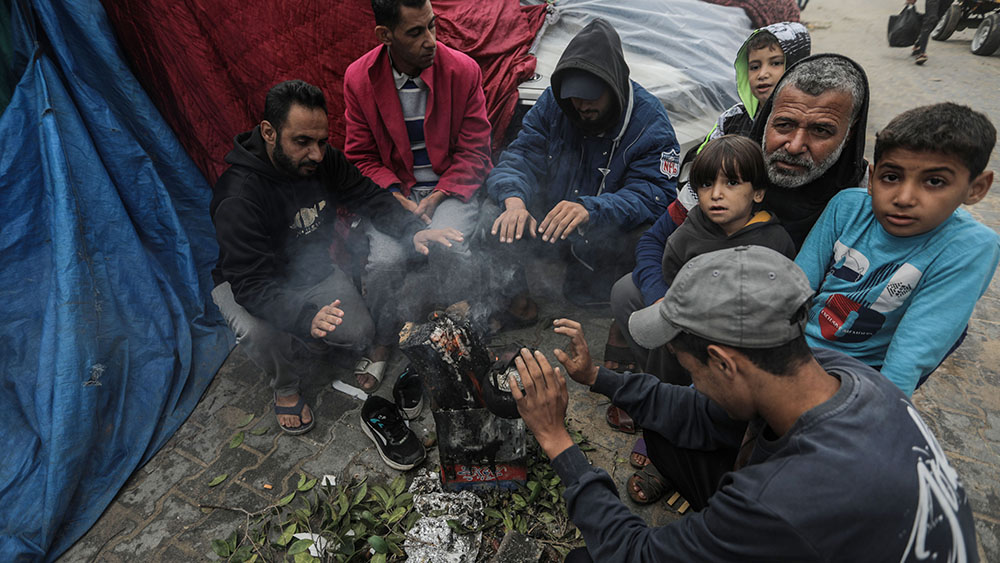UN official: Israel-Palestine war brings FAMINE at incredible speed, leaving hundreds of thousands starving in Gaza
01/23/2024 / By Zoey Sky

According to Martin Griffiths, the United Nations Under-Secretary-General for Humanitarian Affairs and Emergency Relief Coordinator, the Israel-Palestine war in Gaza has brought famine with “such incredible speed.”
Griffiths said that a “great majority” of 400,000 Gazans characterized by UN agencies as at risk of starving are already living in famine conditions. He also lamented that the famine was an “extraordinary and wholly unwelcome aspect of the Gazan war.”
Griffiths lamented that the ongoing war has brought famine with incredible speed “to the front of the lines.” Those caught in the crossfire are suffering because while some want to help, aid has been trickling very slowly into Gaza from two border crossings in the south. Agencies have also warned that it is only a fraction of what the people need.
Early in January, the UN Office for the Coordination of Humanitarian Affairs reported that Israel had denied critical supplies from entering northern Gaza. However, Israel countered by accusing the UN Palestine Refugee Agency (UNRWA) of not doing enough and “stalling” the progress.
Griffiths said that it is still difficult to provide humanitarian aid to the 300,000 Gazans who remain in the northern part of the Strip, where much of the fighting is ongoing. He explained that it’s not just a matter of the number of trucks that can get in.
Griffiths also brought up many roadblocks stopping aid, such as unreliable “deconfliction of access routes” and civilians having to move from one place of insecurity to another. He warned that if people cannot rely on deconfliction of access routes and if hospitals keep getting attacked, humanitarian aid deliveries will continue to be a challenge. (Related: Israel weaponizes food supply as almost 600,000 people go hungry in Gaza.)
The Gaza Health Ministry reported that more than 24,000 people have been killed in Gaza and more than 60,000 others injured since Oct. 7.
On the other hand, the UN has reported that almost 90 percent of Gaza’s pre-war population has been displaced due to Israel’s persistent bombing, which has caused widespread devastation and forcing Gazan civilians to live with the threat of imminent death either by airstrike, starvation or disease.
Griffiths said that the dire humanitarian situation in the enclave could create “generational hatred.” He added that the UN worries for the security of both Israel and Gaza.
Desperate people in Gaza “screaming from hunger”
On Jan. 14, UN agencies issued a joint appeal for greater aid access to Gaza, saying that “a fundamental step change in the flow of humanitarian aid into Gaza is urgently needed.”
The heads of the UN Children’s Fund (UNICEF), the World Food Program (WFP) and the World Health Organization have said that getting enough supplies into and across Gaza depends on several factors, such as the opening of new entry routes, more trucks being allowed through border checks every day, fewer restrictions on the movement of humanitarian workers and guarantees of safety for all those accessing and distributing aid.
Cindy McCain, WFP head, lamented that people in Gaza are at risk of dying of hunger when they are only miles from trucks transporting food. She added that every hour lost puts many innocent lives at risk. McCain added that famine can be prevented, but only if those giving and distributing aid can quickly deliver sufficient supplies and have safe access to people in need.
Back in December, the WFP warned that the “catastrophic hunger crisis” in Gaza, which already threatens to overwhelm the population, will only get worse as the war continues.
Salwa Tibi, a 53-year-old aid worker and mother of four in Gaza, recently told reporters that her children are “screaming all day from hunger.”
As heavy rains, winds and cooler temperatures descend on Gaza from November to February, aid workers and civilians trying to survive constant bombings said that they are suffering from harsh living conditions, insufficient access to warm clothing and outbreaks of disease in overpopulated makeshift shelters.
Food, fuel and water remain scarce, and the price of what little supplies remain are increasing.
Shadi Bleha, a 20-year-old student who was displaced from northern Gaza to Rafah near the border with Egypt, said that adults ration their meals so that children do not go hungry. Bleha, who eats one meal a day, has seen many people starving.
Ongoing conflict has left lives “hanging in the balance”
The Integrated Food Security and Nutrition Phase Classification (IPC) has reported that the entire population of Gaza, which includes at least 2.2 million people, is facing high levels of acute food insecurity or worse. At least one in four households is facing catastrophic conditions.
The IPC added that it is the highest share of people facing high levels of acute food insecurity the initiative has ever classified for any given area or country.
Catherine Russell, UNICEF executive director, said that children at high risk of dying from malnutrition and disease require immediate medical treatment, clean water and sanitation services. Unfortunately, the conditions on the ground do not allow aid workers to safely reach children and families in need.
According to UNICEF, Gaza’s 350,000 children under the age of five are especially vulnerable. The agency warned that in the coming weeks, child wasting, which is the most life-threatening form of malnutrition in children, could affect at least 10,000 children.
Russell said that some of the material aid workers “desperately need to repair and increase water supply” are still restricted from entering Gaza. She added that the situation must soon be resolved because the lives of children and their families are hanging in the balance.
However, the agencies echoed Griffiths’ warning that humanitarian aid alone cannot fight the worsening hunger among Gaza’s population.
Phillipe Lazzarini, Commissioner General for the UNRWA, warned that commercial supplies are essential to allow the markets and private sector to re-open and provide an alternative to food accessibility to those in Gaza.
Visit Starvation.news for more stories about famine caused by wars and other global conflicts.
Watch the video below for more on the Gaza humanitarian crisis and the risk of famine.
This video is from the Cynthia’s Pursuit of Truth channel on Brighteon.com.
More related stories:
GENOCIDE by STARVATION: Israel’s bombing operations have exhausted the food supply in Gaza.
LIES: U.S. asserts no genocide was committed in Gaza amid violent Israeli military campaign.
Sources include:
Submit a correction >>
Tagged Under:
big government, blockade, chaos, collapse, famine, food collapse, food insecurity, food scarcity, food shortage, food supply, Gaza Strip, genocide, Holy War, humanitarian, hunger, Israel, Israel-Hamas war, Middle East, national security, Palestine, panic, rationing, starvation, terrorism, UN, violence, World War III
This article may contain statements that reflect the opinion of the author
RECENT NEWS & ARTICLES
FoodRationing.news is a fact-based public education website published by FoodRationing News Features, LLC.
All content copyright © 2021 by FoodRationing News Features, LLC.
Contact Us with Tips or Corrections
All trademarks, registered trademarks and servicemarks mentioned on this site are the property of their respective owners.




















